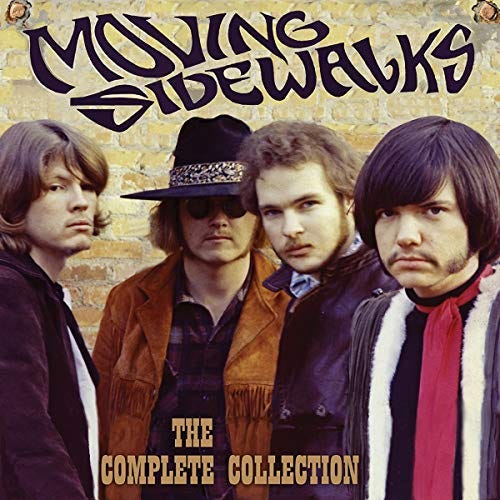Equal parts storyteller, sage, fire-and-brimstone preacher, rollin’-and-tumblin’ bluesman, and rock guitar hero, Billy Gibbons has been entertaining family, friends, and fans for more than a half-century. Offstage, he carries himself with an almost professorial dignity, parsing his phrases carefully as he pulls on his foot-long beard. He laces his conversation with sly innuendos, double entendres, and gentle Texas charm. He’s charismatic, generous, and funny, a passionate collector of classic cars, fine art, weird hats, rare records, and bizarre and beautiful guitars. He’s also an outstanding graphic artist. For Gibbons, though, the biggest thrills still come when ZZ Top hits the stage. The words he told me early in the band’s career – “If we can just keep getting low-down, keep getting funky and playing them blues, we’ll always have a smile on our faces” – still hold true today.
In the Beginning
William Frederick Gibbons was born in the Houston suburb of Tanglewood on December 16, 1949. His was a musically educated household. His father, Frederick Royal Gibbons, worked as a concert pianist and conducted the Freddie Gibbons Orchestra and the Gibbons Brothers Band. His mother, Lorraine, did secretarial work for Lyndon Johnson. By grade school, Billy had already concluded that he wanted to be a performer. The catalysts? “I saw Elvis Presley shaking his hips,” he says. “Even way before that I had that radio tuned in way to the end of the dial there, and Muddy Waters and Howlin’ Wolf were just tearing the speaker out of the radio.”
Billy had to wait until 1963 until he got his first electric guitar: “I got a Gibson Melody Maker and a Fender Champ amp – I was ready to tear it up!” Inspired by records and the radio, Gibbons taught himself to play. “I was not really taking any lessons, just had to sit back on that porch and make up what I could. I just did what felt right, and that was all that wild music I kept hearing on that late-night radio – B.B. King, Jimmy Reed, Howlin’ Wolf, T-Bone Walker. I’m strictly by ear. I can do charts, but mostly it’s get up there and turn it up to Patent Applied For or Patent Pending and go for it!” Around the time Billy got his first Gibson, the recordings of Jimmy Reed inspired him to take up harmonica, a skill he showcased on early Moving Sidewalks records and the ZZ classic “Waitin’ for the Bus.” He also dabbled with violin.
The Moving Sidewalks
In 1965, high schoolers Gibbons, bassist Don Summers and drummer Dan Mitchell organized a cover band called the Coachmen. Mitchell, for one, was instantly impressed by Gibbons’ vocals and guitar playing: “Billy loved singing the blues,” Mitchell said, “and by 17 had mastered all the licks of some of the greatest blues guitarists.” The following June, Gibbons renamed the band Moving Sidewalks, in honor of the newly installed moving sidewalks at Dallas’ Love Field airport. By New Year’s Eve 1966, the Moving Sidewalks had expanded their lineup to a four-piece. “Until then,” Gibbons said, “we were three guys making a bare-bones go at it – guitar, bass, and drums – that was it. A keyboardist with a Hammond solidified the Moving Sidewalks.” Inspired by the Beatles, Rolling Stones, and the Austin-based 13th Floor Elevators, the Moving Sidewalks veered into psychedelic territory, pumped up the volume, and installed flash pots atop their amplifiers. But their long hair, paisley shirts, and crossover R&B-psychedelic sound didn’t always set well in some of the honky-tonk bars they played. “Girls liked us,” Gibbons recalled, “but boyfriends wanted to kill us.” At Houston’s more open-minded teen-scene venues, the band’s theatrics and pyrotechnics brought them a following.
Around 1967, Billy acquired the beautifully figured Gibson Les Paul, nicknamed “Pearly Gates,” that would be prominently featured on many of his early recordings. During our interview for Billy’s 1981 Guitar Player magazine cover story , I asked him about how he scored this guitar: “Oh God – that’s a beautiful story!” Gibbons responded. “I had a ’36 Packard that was a pretty dependable automobile, and there was a girlfriend of mine who was offered a part in a movie out in California. She didn’t have any way to get there, so I said, ‘Well, I’ll tell you what – you take the Packard and roll on out to California and see what happens.’ Well, she got there and they gave her the part, and we decided that the car had divine connections, so we named it Pearly Gates. She kept that car and drove it around, and oh, about six months later, she called me and said, ‘I’ve sold the car and I’m sending you the money.’ It was quite ironic, because the day the check arrived was the day I found that guitar. It was sitting under a bed at an old farmhouse outside of Houston. I called her up and said, ‘It worked out just great. The check arrived and I was able to buy a new guitar.’ And she said, ‘Well, we’re going to name it Pearly Gates, because I know you’ll be playing some divine music.’ It’s a 1959, and it’s stock all the way. Right out of the box.”
Keep reading with a 7-day free trial
Subscribe to Talking Guitar ★ Jas Obrecht's Music Magazine to keep reading this post and get 7 days of free access to the full post archives.




